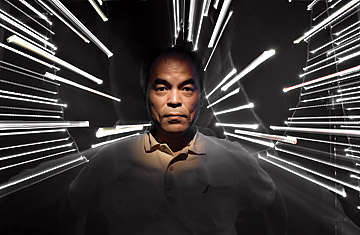
Shuji Nakamura
The world is a brighter place because Shuji Nakamura is not easily discouraged. In 1993 he astonished the scientific community with the first successful blue light-emitting diode, or LED. The blue LED was the last step in the creation of lighting's holy grail, the brilliant white LED--an ultra-efficient successor to Thomas Edison's incandescent lightbulb, circa 1879.
At the time of his breakthrough, Nakamura was an unknown engineer without a Ph.D. working for a tiny Japanese electronics company on Shikoku Island. His colleagues would tell him, "'You should quit. You wasted all our research money for 10 years,'" Nakamura remembers. "That just pissed me off. So I figured, if I'm going to quit anyway, I might as well do the research I've always wanted to do."
He did, and soon followed up the blue LED with the first bright green and white LEDs. An LED is a semiconductor that generates light, but very little heat, when an electric current is passed through it. Different semiconductor materials produce different colors; Nakamura used gallium nitride, which generates blue and white light. The resulting LEDs use as little as one-seventh the energy as an incandescent bulb and can last about 100 times as long, up to 100,000 hours. If they were widely used, LEDs could lead to enormous energy savings and carbon-emissions reductions. In the developing world, LEDs paired with solar panels could provide a cheap, sustainable light source that doesn't need a traditional power grid.
Nakamura's work did not remain obscure for long. He left Japan in 1999 to join the University of California at Santa Barbara and last year won the $1.3 million Millennium Technology Prize for his work on LEDs. He is now researching zero-energy-loss LEDs, which would be close to 100% efficient. Today even the best LEDs lose some energy to heat. Many scientists feel LEDs are already approaching the limit of their efficiency, but it wouldn't be the first time Nakamura has defied the odds.